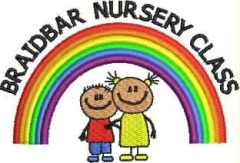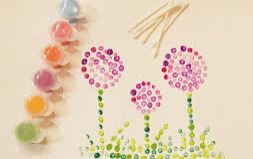Goedemorgen!
We are excited to be able to chat with some of you today at 11am and 1pm and hope you are also looking forward to it. The scheduled meetings should be visible on Teams and easy to access. If you have any issues please post a comment in the feed and we will do everything we can to help you.
Today we thought we would explore themes of art and artists a little further, encouraging close observation, evaluation and recognition of skills.
Artists don’t just make flat 2D pictures, they sometimes create with 3D objects too, like the model caterpillars some of you made yesterday.
Why don’t you become a jewellery artist today? Use beads if you have them and if not some kind of pasta tube like penne, macaroni or rigatoni. You could use buttons, card or cut shorter pieces of drinking straws or paper roll. You could paint or decorate your pieces before stringing them together with wool, thread or string to create a unique necklace.
Discuss the colours shapes and overall design. It can be good to have a plan but remember it’s okay to change and adjust as you go!
Piet Mondrian made pictures and decorated buildings, famously using black lines to make rectangles and squares. Can you find some squares and rectangles around the house? Remember, they both have 4 sides and 4 corners but a rectangle has 2 long and 2 short sides whereas a square’s sides are all the same length.
Why don’t you draw, paint, collage or build something inspired by Mondrian?
If you don’t have ready mixed paints at home, or if you want to try a more sensory experience, why don’t you make your own?
Use a range of powders – hot chocolate, gravy, spices, salt – from the kitchen and mix with small quantities of water. How do they smell? What texture do they have? Can you paint with them using some of the methods we suggested yesterday? We would love to hear how you get on with this investigation!
Play a tricky ‘barrier game’ to develop language and communication. You and your child should sit (ideally) opposite one another but with a barrier between you so you can hear but not see what the other is doing. You should both have exactly the same materials e.g. paper, pens, paint.
Decide who is leading and who is following. It may be beneficial for the adult to lead the first time to model the game. The leader starts to make marks on their page and describes to the follower step-by-step and they then follow. They can ask questions to clarify. This should continue until the leader has completed their image/model at which point you show one another and compare similarities and differences.
E.G.
A: Draw a big circle, taking up most of the page with a yellow pen
A: Now take a black pen and draw two small circles next to each other
B: Where on the page should the two small circles be?
A: In the middle of the big yellow circle
A: Now draw a small black dot in each of the small black circles
A: Use your red pen and draw a shape like an upside down rainbow under the two black circles
B. How big should it be?
A. It should fit inside the big yellow circle but it should be wider than the two black circles.
F. If you have your learning book at home why don’t you do a special drawing in there today? Ask your adult to write something about it with you.
G. Why don’t you make a special piece of art for someone you love and miss. Maybe you could take a photo and send it to them or talk to them about it on a call? Perhaps you could add it to that box of special things you might be saving up to give them when you next meet?
Go on an art hunt around the house. Look for your own art as well as images and models your parents may own. Create a table in advance, using categories of your choice, then record what you find with simple tally marks.

















